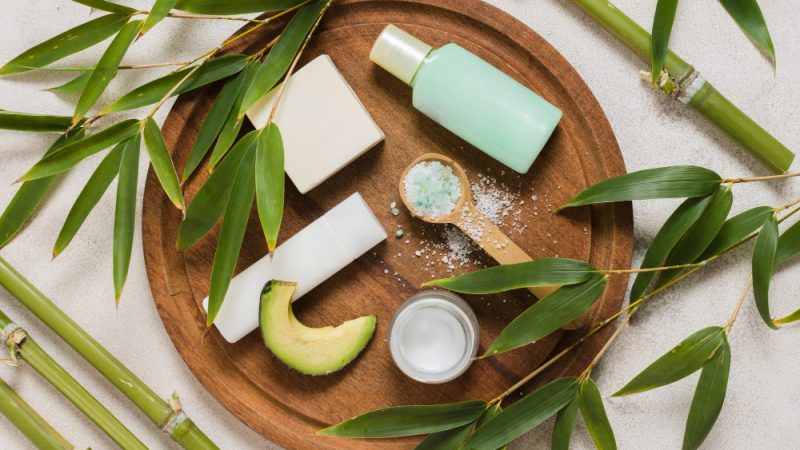Over the last decade, beauty consumers have become increasingly aware of product safety, ingredient transparency, and the potential long term impact of harsh chemicals on the skin. As a result, non toxic skincare has become more than just a trend. It has turned into a global movement driven by people who want effective products that are also safe, gentle, and better for their overall health. If you are trying to understand what non toxic skincare truly means or want to build a cleaner beauty routine, this guide will walk you through everything you need to know.
What Non Toxic Skincare Really Means
Non toxic skincare focuses on using products formulated without potentially harmful chemicals, harsh irritants, or controversial additives. While the term non toxic is not strictly regulated, it generally refers to skincare free from ingredients such as parabens, sulfates, synthetic fragrances, phthalates, and certain preservatives that are known to irritate the skin or raise safety concerns.
It does not mean the products are completely chemical free because every formula uses chemicals in some form. Instead, it means prioritizing ingredients that are considered safe, gentle, and less likely to cause long term negative effects. Ultimately, non toxic skincare is about making informed, mindful choices that support your skin’s health instead of overwhelming it.
Why Non Toxic Skincare Is Becoming More Popular
Several factors have contributed to the rise of non toxic skincare. One major influence is increased consumer education. People are now more aware of what goes into their beauty products. Online resources, ingredient databases, and beauty experts have made ingredient research accessible to everyone.
Another reason is the growing desire for clean and sustainable living. Many individuals prefer products that are not only gentle on the skin but also better for the environment. In addition, certain synthetic ingredients have been associated with irritation, allergies, or hormonal concerns, pushing consumers to look for safer alternatives.
The combination of health awareness and environmental consciousness has made non toxic skincare a natural choice for many people.
Common Ingredients to Avoid
A major part of transitioning to non toxic skincare is understanding which ingredients may be problematic. Below are some commonly avoided components in clean beauty routines.
Parabens are preservatives used to extend shelf life. They have been debated due to potential hormone related concerns. While research continues, many people choose to avoid them as a precaution.
Sulfates, especially sodium lauryl sulfate and sodium laureth sulfate, are foaming agents that can strip the skin of moisture. They are known to cause dryness and irritation.
Synthetic fragrances often contain dozens of unlisted chemicals. They can trigger allergies or sensitivities, particularly for people with reactive skin.
Phthalates are often hidden under the term fragrance. They have been linked to hormonal disruption and are widely avoided in clean skincare.
Formaldehyde releasing preservatives are slow releasing chemicals found in some cleansers and moisturizers. They can cause irritation and have raised safety concerns.
By understanding these ingredients, you can make more conscious decisions about the products you apply to your skin every day.
Safe and Gentle Ingredients to Look For
Just as some ingredients should be avoided, others are highly valued in non toxic skincare. Plant based oils such as jojoba, rosehip, and squalane nourish the skin without clogging pores. They mimic the skin’s natural oils and provide deep hydration.
Aloe vera is a soothing ingredient used in many clean formulas. It helps calm irritation and provides lightweight moisture. Hyaluronic acid is another favorite because it locks in hydration and supports plump, healthy looking skin without causing sensitivity.
Antioxidants such as vitamin C, green tea, and niacinamide help protect the skin from environmental damage. These ingredients also brighten and strengthen the skin barrier.
Natural exfoliants such as lactic acid or fruit enzymes gently remove dead skin cells without the harshness of synthetic scrubs. These ingredients support a smooth and radiant complexion.
Choosing products with these ingredients ensures that your skincare routine remains gentle yet effective.
How to Build a Non Toxic Skincare Routine
Building a non toxic skincare routine does not require replacing all your products at once. Start with the essentials. Cleanser, moisturizer, and sunscreen are the most frequently used items, so replacing them first makes a big impact.
Choose a gentle non toxic cleanser that does not strip the skin. Look for hydrating ingredients and avoid strong foaming agents. For moisturizers, opt for products with plant oils and hydrating compounds such as hyaluronic acid. Sunscreen is essential for daily protection. Physical mineral sunscreens are popular in non toxic routines because they avoid controversial chemical filters.
Once you establish a base routine, slowly transition other items such as serums, exfoliants, and masks. This gradual approach makes the process easier and helps your skin adjust comfortably.
Understanding Labels and Certifications
Reading skincare labels can be confusing, especially when brands use terms like natural, clean, or organic without clear definitions. Certifications can help guide you toward products with higher standards.
Organic certifications indicate that a certain percentage of ingredients come from organic farming. Cruelty free certifications ensure that products are not tested on animals. Clean beauty seals from recognized organizations often signify that the brand avoids certain harmful ingredients.
While labels are helpful, always read ingredient lists when possible. Certifications offer guidance, but ingredient transparency is the most reliable way to determine if a product meets your non toxic standards.
Avoiding Greenwashing in Skincare
Greenwashing occurs when brands market themselves as natural or eco friendly without following genuine clean beauty practices. Some companies use misleading terms or images that make products appear safer than they are.
The best way to avoid greenwashing is to research ingredients, check for third party certifications, and read reviews from trusted sources. Remember that marketing terms do not always reflect the true composition of the product. Knowledge is your strongest tool in navigating the beauty industry.
Benefits of Choosing Non Toxic Skincare
Choosing non toxic products benefits both your skin and overall well being. Because these formulas rely on gentle ingredients, they reduce the risk of irritation, allergies, and sensitivity. Many people experience improved skin texture, fewer breakouts, and a stronger skin barrier after switching to non toxic routines.
Another advantage is long term safety. By avoiding controversial chemicals, you reduce potential exposure to substances still under scientific scrutiny. Non toxic skincare also tends to include nourishing plant based ingredients that support natural healing mechanisms.
For many, the shift to non toxic products is part of a broader desire for healthier living, offering peace of mind and improved skin health.
How to Transition to a Non Toxic Routine Gradually
Switching to a completely non toxic routine does not have to be overwhelming. Start by replacing products as they run out. Evaluate which items you use most often and focus on those first. Cleansers, moisturizers, and sunscreens form the foundation of skincare, so updating these offers immediate benefits.
Next, review products containing strong chemical exfoliants, synthetic fragrances, or preservatives you prefer to avoid. Replace them with gentler alternatives. Keep in mind that skin needs time to adjust. Observe changes and adjust your routine accordingly.
Within a few months, your entire routine can become safer, cleaner, and more aligned with your skincare values.
Conclusion
Non toxic skincare is about making informed and conscious beauty choices that support both your skin’s health and your long term well being. By understanding which ingredients to avoid, recognizing safe alternatives, and building a routine with gentle and effective formulations, you can take control of what you apply to your skin every day. This guide provides the foundation for navigating the clean beauty world confidently. With the right information and a thoughtful approach, non toxic skincare can lead to healthier, happier skin and a more mindful beauty routine.
FAQs
What does non toxic skincare mean
It refers to skincare products formulated without potentially harmful or controversial chemical ingredients. These products focus on safety, gentleness, and ingredient transparency.
Is non toxic skincare always natural
Not always. Some non toxic products use safe synthetic ingredients. The key is that they avoid harsh or questionable chemicals.
Can non toxic skincare work for sensitive skin
Yes. Many people with sensitive skin benefit from non toxic formulas because they avoid irritating fragrances and harsh additives.
Do I need to switch my whole routine at once
No. You can transition gradually by replacing products as they run out. Start with cleansers, moisturizers, and sunscreen.
How do I know if a product is truly non toxic
Read ingredient lists, look for trusted certifications, and research brands known for transparency and clean formulations.
Also read: Microneedle Skincare Explained: A Complete Beginner’s Guide





